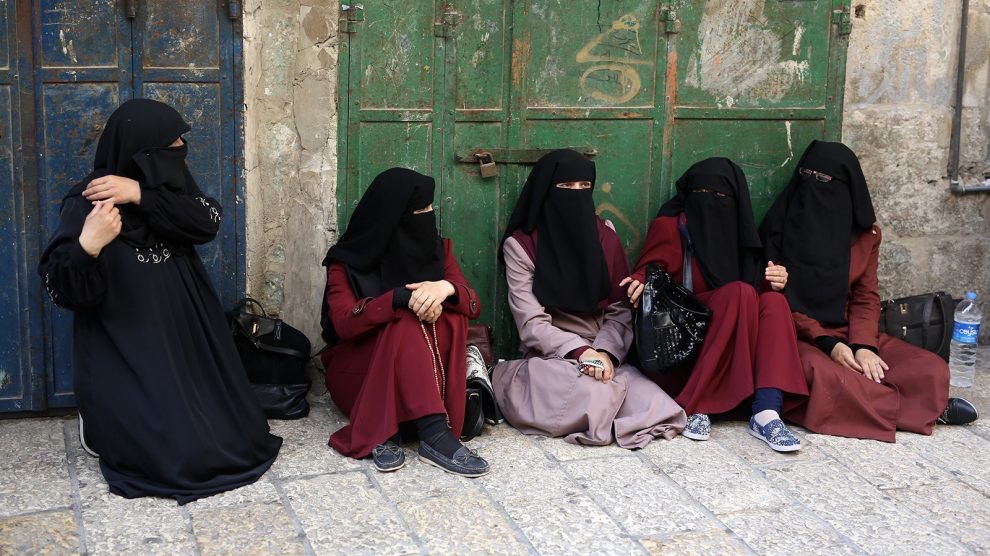
MICHELE CHABIN, of Religion News Service, reports…
Jersualem
RNS
In this holy city, hats, hijabs and clerical habits are a way of life and go all but unnnoticed on its busy streets.
Even so, No’am Bar’am-Ben Yossef, an expert on religious garb, was surprised when, a decade ago, she began to see Jewish women dressed much like devout Muslims and Orthodox Christian nuns.
Walking along the invisible seam between East and West Jerusalem, “there was a point when I couldn’t distinguish between Jewish women, Muslims and Greek or Russian Orthodox nuns when I was seeing them from behind,” Bar’am-Ben Yossef told Religion News Service.
She was eager to learn what motivated this small but growing group of Jewish women to dress in ankle-length black robes and layers of scarves, wraps and, sometimes, face veils.

College students at the entrance to the Al-Aqsa Mosque compound (Haram-Al-Sharif), in 2013, part of the exhibition “Veiled Women of the Holy Land: New Trends in Modest Dress.” PICTURE: Menahem Kahana
Her investigation propelled her into the world of the most insular Jewish sects and broadened to include interviews with devout Muslim women and nuns.
Eager to share the women’s words, Bar’am-Ben Yossef, a senior curator in the Israel Museum’s Art and Jewish Life department, asked Ari Teperberg, a theater director and performer, to co-create the exhibition ‘Veiled Women of the Holy Land: New Trends in Modest Dress’.
“Israeli society is becoming more religious,” Bar’am-Ben Yossef noted. “I think it’s a reaction to perceived secular promiscuousness, but also a way to feel more secure in an uncertain world.”
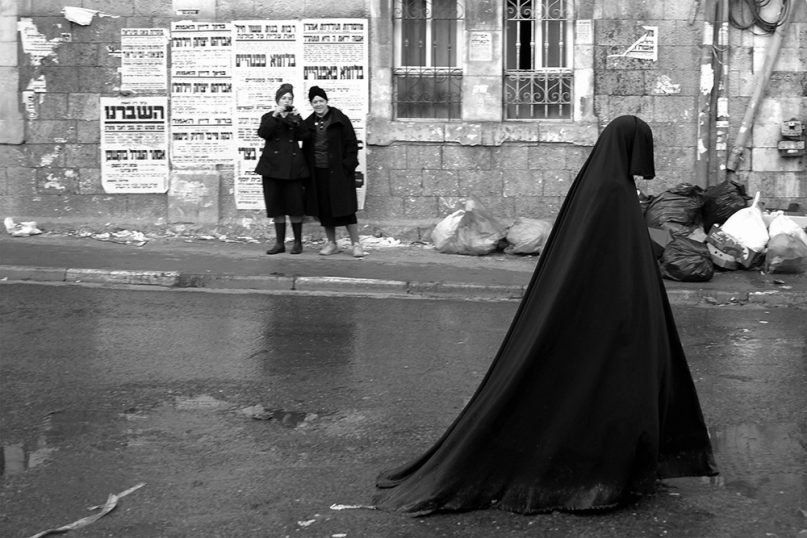
A Jewish woman wearing a cloak and veil passes through the Mea Shearim neighbourhood of Jerusalem in 2012. The veil trails on the ground, imitating the coverings that trailed behind the Ark of the Covenant in the desert. Part of the “Veiled Women of the Holy Land: New Trends in Modest Dress” exhibition. PICTURE: Yael Gadot
Bar’am-Ben Yossef said she and Teperberg created the exhibition to challenge the public’s perceptions of women who cover almost every inch of their bodies.
At the entrance to the exhibition, visitors see artistic photographs of random modest or covered women walking in the city’s streets and mannequins representing the three faiths dressed in startlingly similar attire.
Their clothing bears no resemblance to the modest but Westernised long-sleeved shirts and below-the-knee skirts commonly worn by mainstream ultra-Orthodox women and is far more conservative than the brightly colored hijabs and lively accessories favored by most of the city’s Muslim women.
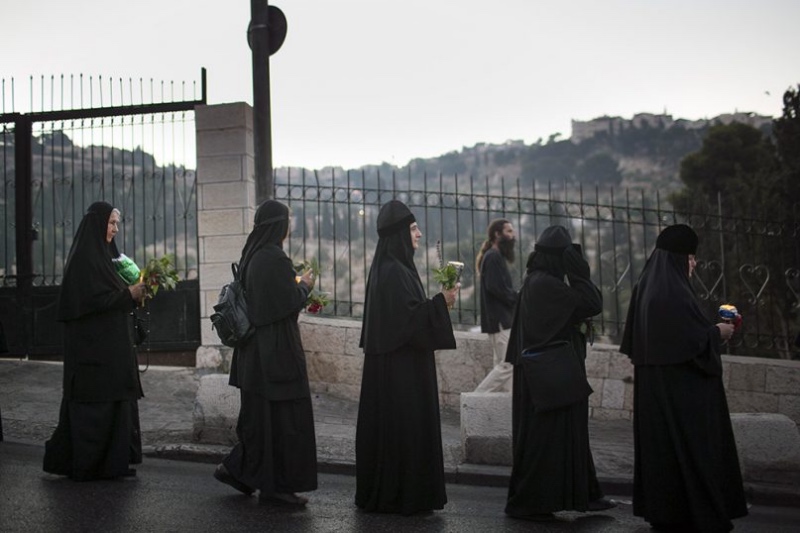
Christian Orthodox nuns hold candles and flowers as they walk along the Via Dolorosa in the Old City of Jerusalem, during the 2014 Dormition of the Mother of God commemorating the death of Virgin Mary — walking from the Church of the Holy Sepulchre to the Tomb of Mary in Gethsemane. Part of the “Veiled Women of the Holy Land: New Trends in Modest Dress” exhibition. PICTURE: Noam Moskowitz
At the exhibition’s core is a 16-minute video that allows three women – one from each faith – to explain why they adopted what many consider to be a life of religious extremism.
As the video starts, the women are fully clothed, but as they tell their stories they shed some of their layers of clothing (they remain modestly dressed) as if they are peeling an onion. Toward the end of the video they put the layers back on.
The women on screen are actresses but the words they convey are meticulously compiled from the interviews Bar’am-Ben Yossef conducted.
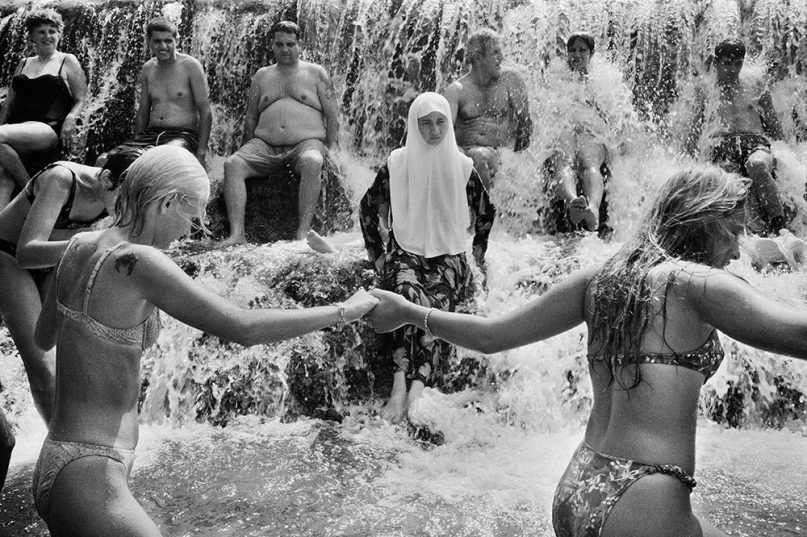
People enjoy waterfalls at Gan Ha-Shlosha National Park, also known as Sakhneh, in Israel in 2001. Part of the “Veiled Women of the Holy Land: New Trends in Modest Dress” exhibition. PICTURE: Alex Letvac
Right from the start, the exhibition asks visitors to consider whether choosing to dress extremely modestly is the result of patriarchal oppression or actually an expression of feminism, and to examine their own biases.
“Every one of us perceives the world through a virtual veil or filter,” said the curator. “We put tags on people but we don’t really listen to them. I’d really love people to put aside this virtual veil and look at these women.”
Bar’am-Ben Yossef said Israelis – including ultra-Orthodox Jews – view veiled Jewish women as outsiders and extremists.
“People call them ‘Taliban women,’ something they perceive as very offensive.”
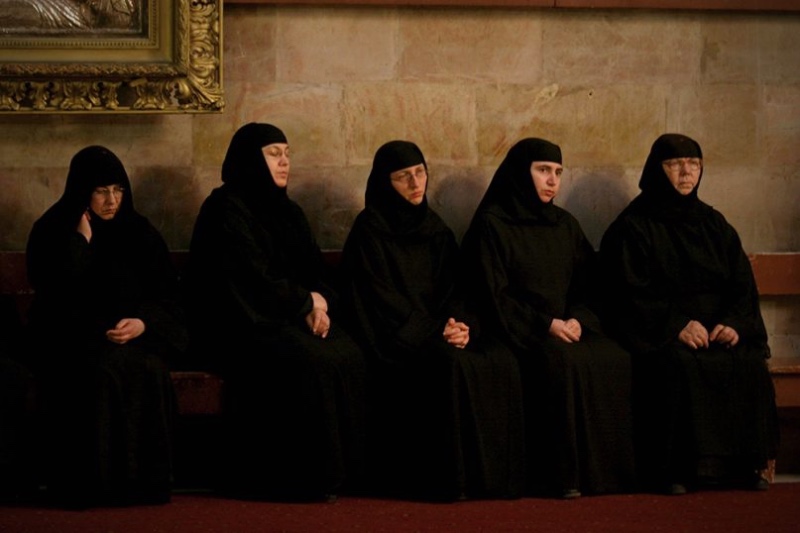
Greek Orthodox Nuns are seen during a Mass in the Holy Sepulcher, in the Old City of Jerusalem, on 19th March, 2006. Part of the “Veiled Women of the Holy Land: New Trends in Modest Dress” exhibition. PICTURE: Quique Kierszenbam
Though the interviewees were raised in vastly different cultures, the common denominator is their thirst for spiritual purpose and meaning.
Because religion, ethnicity and physical modesty are hot-button topics in Israel, Bar’am-Ben Yossef and Teperberg initially planned to show the videos of the three women in three separate rooms.
“We thought it would be interpreted as disrespectful to imply that they are part of a single phenomenon,” Teperberg said. “But there was a moment in the process when we understood the viewing experience had to culminate in something. So all three videos are shown in one room, side by side.”
Above all, the creators strived to be respectful of the women who told their stories.
“We realise that exposing modesty is a contradiction in terms,” Teperberg said. “We always thought, How would these women feel if they watched this? We didn’t use their stories to stab them in the back.”
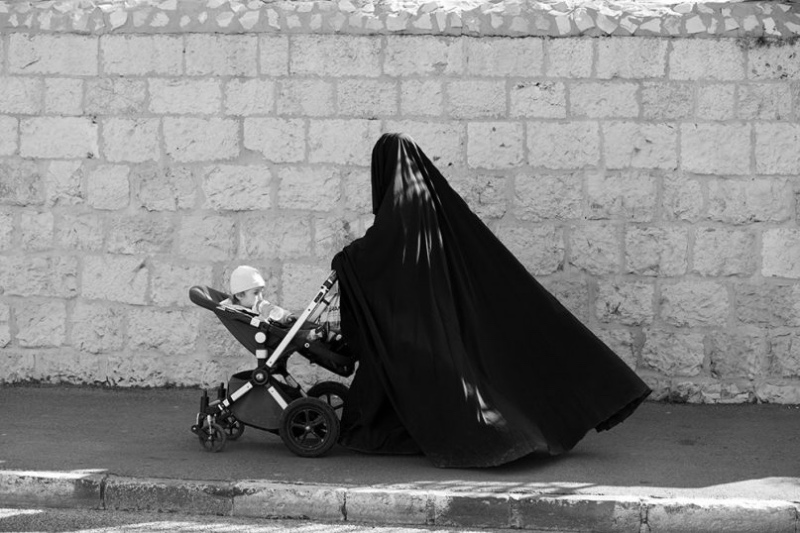
A Jewish woman pushes a child while wearing a veiled cloak in the Mea Shearim neighborhood of Jerusalem in 2015. Part of the “Veiled Women of the Holy Land: New Trends in Modest Dress” exhibition. PICTURE: Abir Sultan
Many of the participants attended private showings of the video when the museum was closed to the public.
While the vast majority were pleased – especially by the term used to describe them, Jewish modest women – some were shocked to be compared to the women of different faiths.
Odel Milman, one of the women who participated in the project, told RNS she agreed to speak about her life “because there is a lot of misconception about women who dress this way.”
Milman, whose long robes and scarves distinguish her from her ultra-Orthodox neighbors, said she adopted this way of dress very gradually.
“My husband and I heard about the phenomenon and I started meeting with other women who were growing in modesty. They showed me the Jewish texts where it’s written what a woman should wear.”
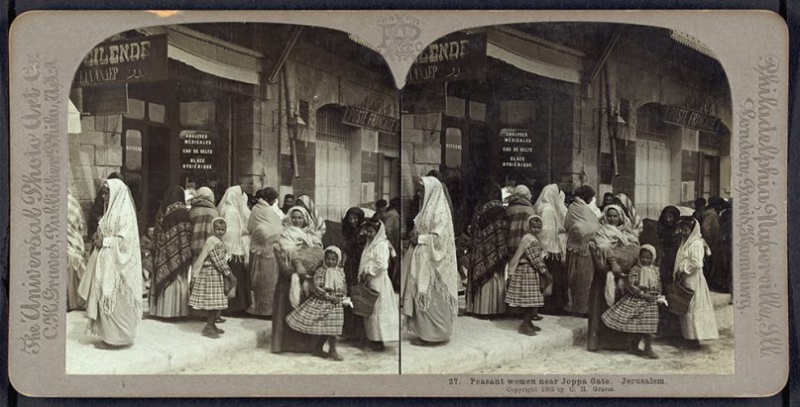
Jewish women at Jaffa Gate wearing shawls in Jerusalem, circa 1903. Part of the “Veiled Women of the Holy Land: New Trends in Modest Dress” exhibition. PICTURE: The Graves Collection/Library of Congress
Although today’s rabbis do not require that women dress the way they did in ancient times, “it is not forbidden,” Milman emphasised.
She has not seen the exhibition because, as a woman who values modesty, “I don’t want to draw attention to myself,” Milman said.
Bar’am-Ben Yossef has been gratified by the public’s positive reaction to the exhibition, where Jews, Muslims and Christians can often be seen watching the video together.
“In Israel, Jews don’t know anything about nuns and little about Muslim women, and vice versa. They all live within themselves. Our goal is to encourage them to look around and listen.”





